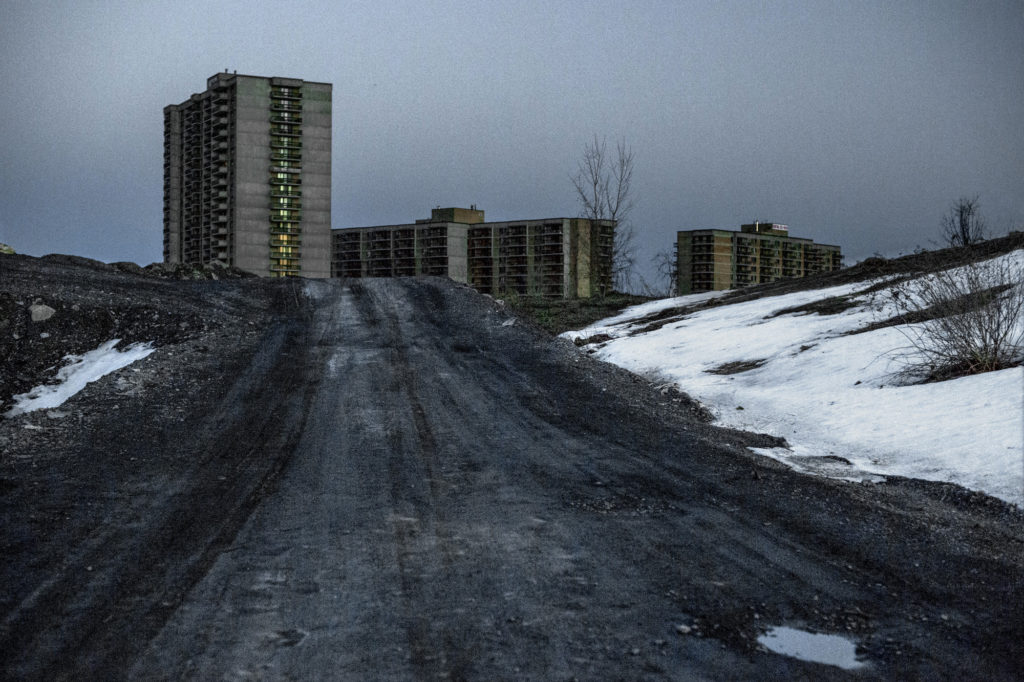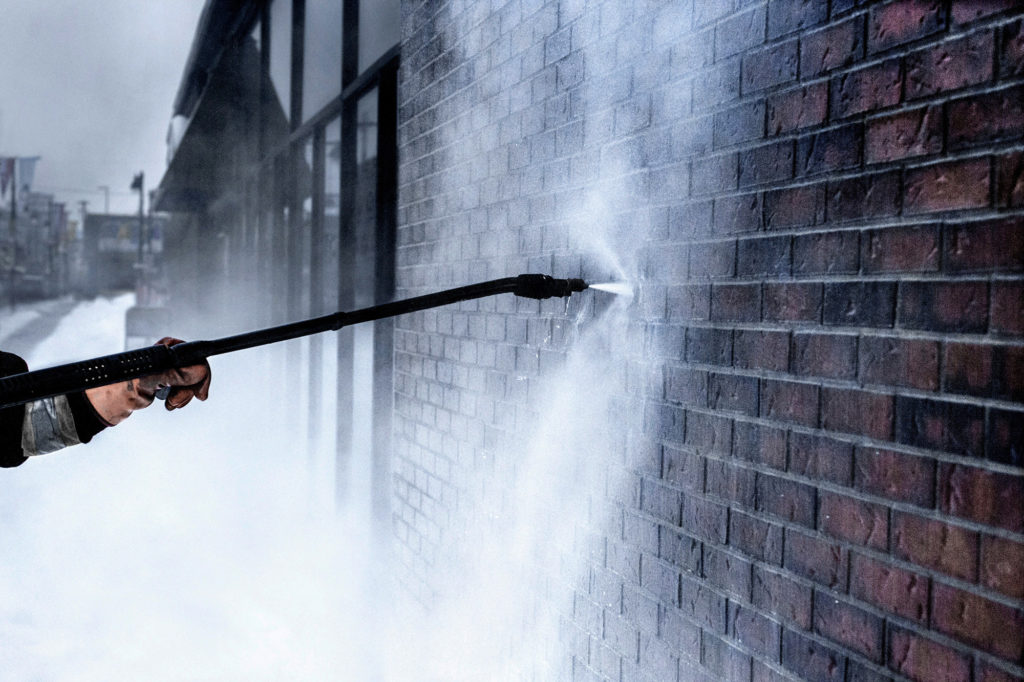Tony Fouhse is an Ottawa-based photographer whose work includes elements of anthropology, sociology, portraiture, document and art. Most recently his projects have moved towards photo sequences that stress the narrative aspects of photography. The people, places and things he depicts in this new work are real, in the sense that they existed in front of his lens, but the photo sequences he creates are not about specific locations and demographics. Instead the photographs become slices of time and space that are recontextualized in order to point to a possibility. In other words: his new projects are works of fiction.
Instead of asking you about the starting point of the series I would rather ask how did you find the right time to put down the camera and publish the After the Fact series?
I never begin a project with a definite plan, all I have is a vague notion of what I’m interested in photographing. So I begin to photograph stuff that might have something to do with that interest. Some of the images I make show me a way to proceed. Eventually, with wrong turns here and there, my “subject” is revealed. The process is intuitive and fluid.
I began the project that would turn into After the Fact by wondering how I could photograph what the future might look like. I spent 2 years (2016-18) working on that. As I photographed I’d put any images I thought might be useful into a “possible selects” folder. From time to time I’d do a rough edit (the old school definition of edit: to choose and put into order) from that folder. The rough edits allowed me to see what I’d done so far and to detect possible shapes the project might take. This, in turn, refined the types of images I created for the project.
Over time that process (photographing, interim edits, more photographing) began to point to a conclusion. As the conclusion became more clear I photographed less and spent more time on the edit/sequence. Eventually I completely shifted my attention to the edit/sequence and figured out the final shape of the project.
Do you spend more time taking photographs or sequencing them?
I always spend more time photographing than sequencing. (Typically I spend 2 to 4 years photographing each project.) The nature and complexity of each project dictates how long the edit/ sequence will take. The most difficult projects to photograph, for me, are the ones that involve a lot of portraiture. Meeting people and working with them is pretty intense and time consuming. But the edit/sequence of these projects is usually fairly straightforward.
With After the Fact my work shifted from a documentary approach towards a narrative one. Because of this shift I began to think of the images I was making in a different way: I saw them as merely raw data. And as we all know, data in isolation has no real worth. It’s the interpretation of data that gives it meaning. So all I had to do was make sure I had enough images to allow for an interesting, multidimensional edit/sequence. (I had a list in my mind of things to look for: failed infrastructure, listless crowds, military/police, degraded environments, isolated individuals and so on.)
I worked on the edit of After the Fact for about nine months. At the beginning I was quite confused and frustrated. I had no idea how I could combine the images into some cohesive whole. After a lot of wrong turns its shape began to emerge and I could see what I wanted it to become. It is by far the most complex, multifaceted project I’ve ever done. As well as being about the future, it alludes to the passage (and repetition) of time. Not only that, but the book can be “read” either forwards or backwards.
When and where did you get your political consciousness from?
1977, in my friend Dave’s basement. That’s when I first heard Never Mind the Bollocks, Here’s The Sex Pistols.
What are the possible dynamics between photography and text – how and when do they enhance each other? Ι feel that this time you preferred a more poetic side on this project, avoiding captions or text to explain the stories.
My projects have never used much text. I typically attach a brief statement or a salient quote, either at the beginning or end of the work. The titles I give my documentary projects are most often short and descriptive, usually a word or two long. The titles of individual images in these projects almost always just state the subject being photographed, and its location. I’m not too interested in pinning any project down with too much explanation. With After the Fact my work shifted from a documentary approach to a narrative one; it isn’t about specific locations or demographics. Instead the photographs are recontextualized in order to point to a possibility. In other words, it is a work of fiction. Because of this the individual photographs are all untitled. When it comes to using images and text, what you leave out is just as important as what you include.
What would you advise a young photographer who wants to publish her first book or have a solo show? Likewise, what is your opinion about the self-publishing that is constantly emerging in the last decade? What are the pros and the cons if we do the comparison with the publishing houses?
All my projects are long form, between 10 and 60 photographs. They rely on sequence and context, rather than just being a bunch of swell images to hang on a wall. While having an exhibition is nice, I prefer presenting my work in book form. Making a book is more complicated than mounting an exhibition, there are many more moving parts. As well, because books are permanent the edit, sequence and design decisions are brought into sharper focus.
If you want to make a book there will be many, many decisions you’ll have to make. From practical things such as, what size will it be and how much will it weigh? (In Canada, where I live, if a package weighs more than 500 grams and is over a certain size the cost of shipping becomes very expensive. Because of this I make most of my books about 8.5 x 11 inches and make sure they weigh less than 500 grams.) And then there are the aesthetic choices. What paper should you use? What size will the images be on the page? How will the book be bound? What font? Where does the text go? And a hundred other decisions. To help with those decisions I always work with a designer when I’m producing a book.
“…I began to think of the images I was making in a different way: I saw them as merely raw data. And as we all know, data in isolation has no real worth. “
But the main thing, the most difficult thing, is making sure the edit and sequence you are presenting represents you and brings your voice forward. You will (should) go through 10 or 15 or 20 iterations before you get it right (or as right as it can be). Some of that work will be done in isolation, but it’s also important to show the book dummies, as you make them, to people who’s opinion you trust. And make sure you listen to and consider what they say. Don’t be afraid to reconsider. Don’t be afraid of changes. As far as self-publishing vs publishing houses, I wouldn’t know. All my books have been self published. I suppose a publishing house will lend your book a certain amount of status and distribution. But for me, the beauty of self-publishing is the control I have over all the creative aspects of the book. (Some might see that as a negative, equating control with having to make too many decisions that are outside their area of expertise.)
With self-publishing what you lose in terms of distribution you can make up for by the fact that you are cutting out the middle-man. For instance, if a book costs me, say, $18 to design and print, I’ll sell it for $40, plus shipping. That means that if my book sells out (they all have) I end up making money. (I’m not interested in making books only for vanity.) And, finally, you must remember there is a big difference between your friends and acquaintances “liking” your work on social media, and them actually reaching into their wallets to pay for it. I know lots of photographers who have boxes of unsold books in storage because of that mistake.
How do you get financial support for your personal projects?
Occasionally I will receive arts grants or make print sales. Most of my books were financed using crowd funding. Other than that, my projects are self-financed, the main cost being time and emotion. I don’t mind spending either of those.
What are you working on now?
My new project is a sequel to After the Fact. It’s an attempt to picture what the world might look and feel like after the COVID-19 pandemic subsides.
One last thing, in your art making or perception of art in general, what would be the biggest difference between the early stages of your career and the present?
I’m not sure I’m the best judge of that. I think, though, that my latest projects are a kind of throwback to the kind of shooting I did at the very beginning of my career: Using a small handheld camera in a loose and fluid way and combining disparate elements into a whole. The main difference, as far as I can tell is, the new work is less action-packed and more sophisticated. I’m not sure if that’s a good or a bad thing.
More on his website













